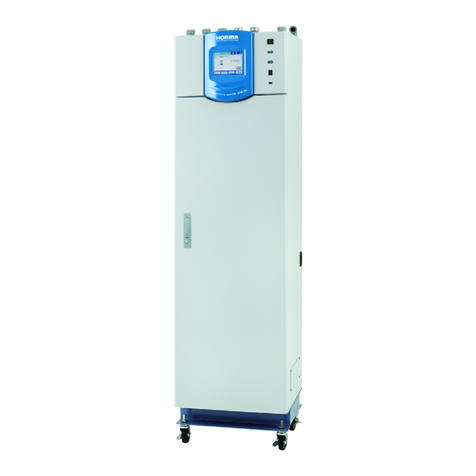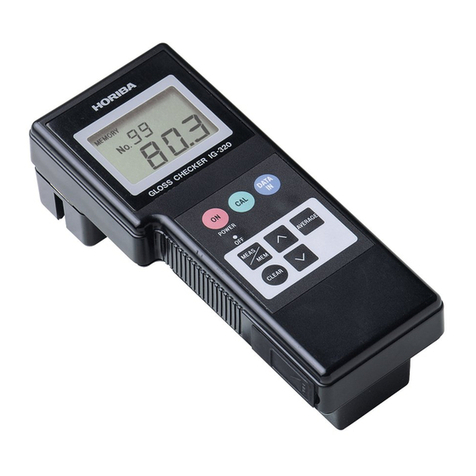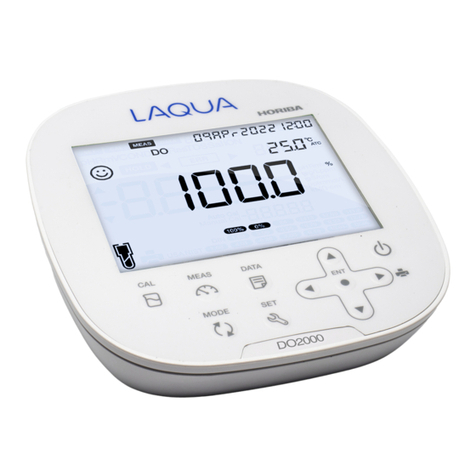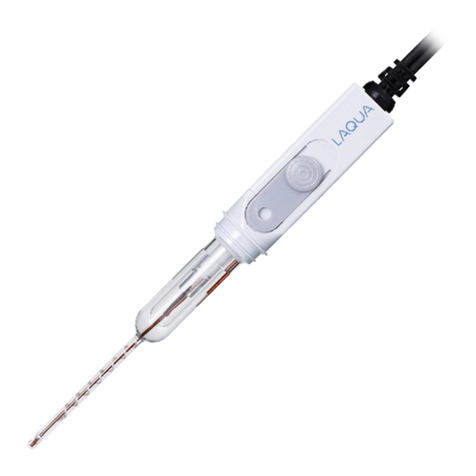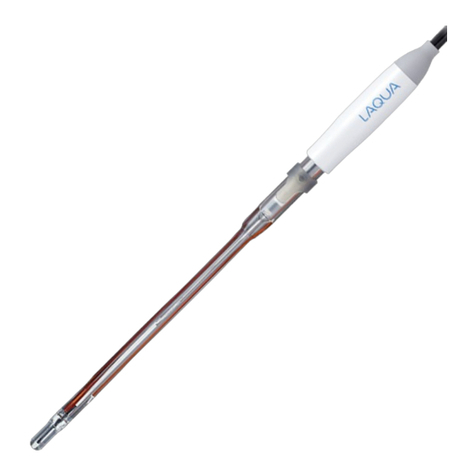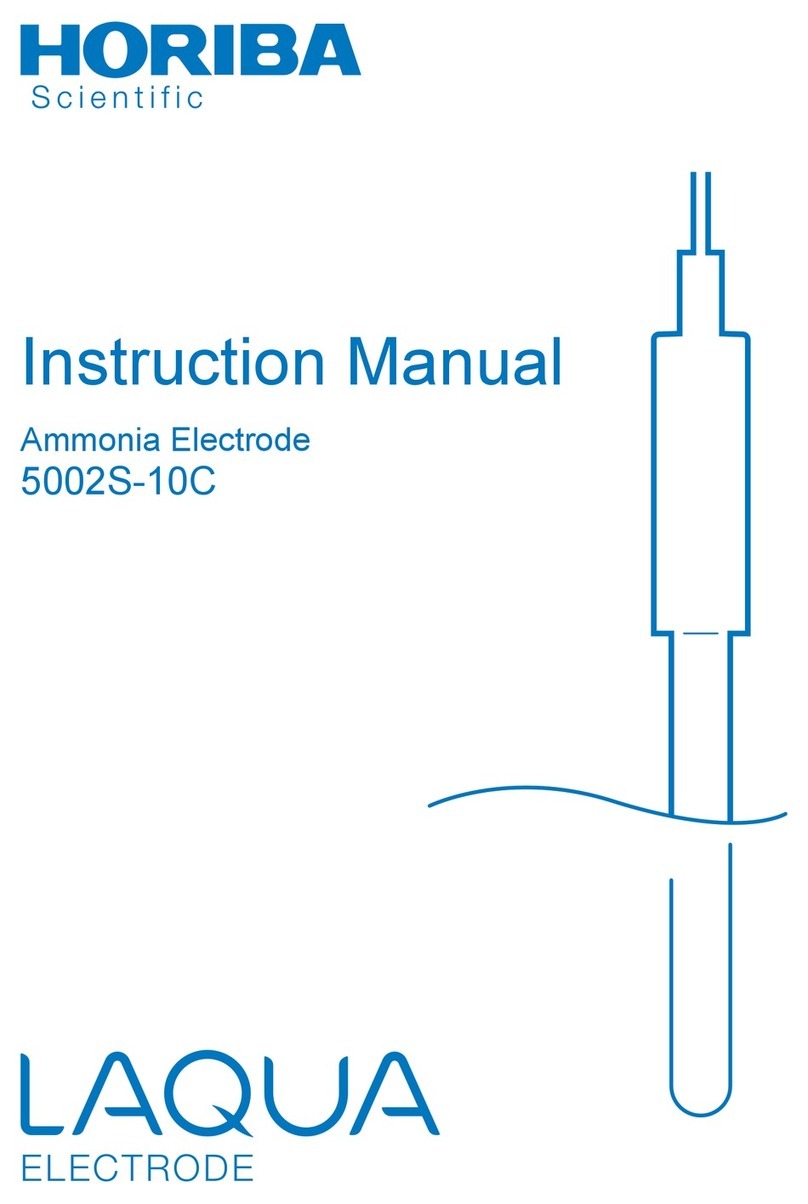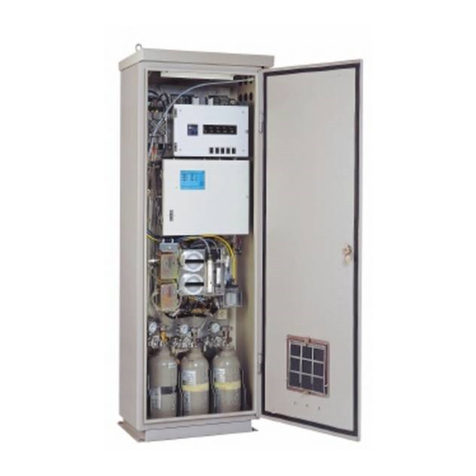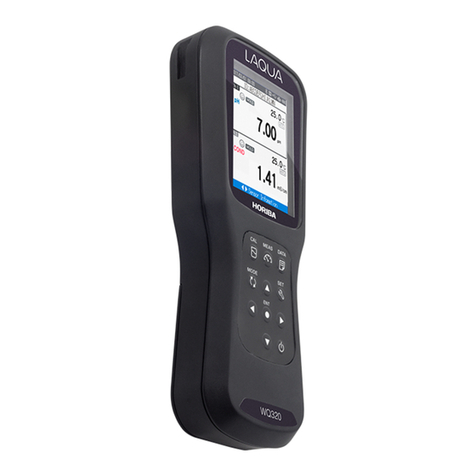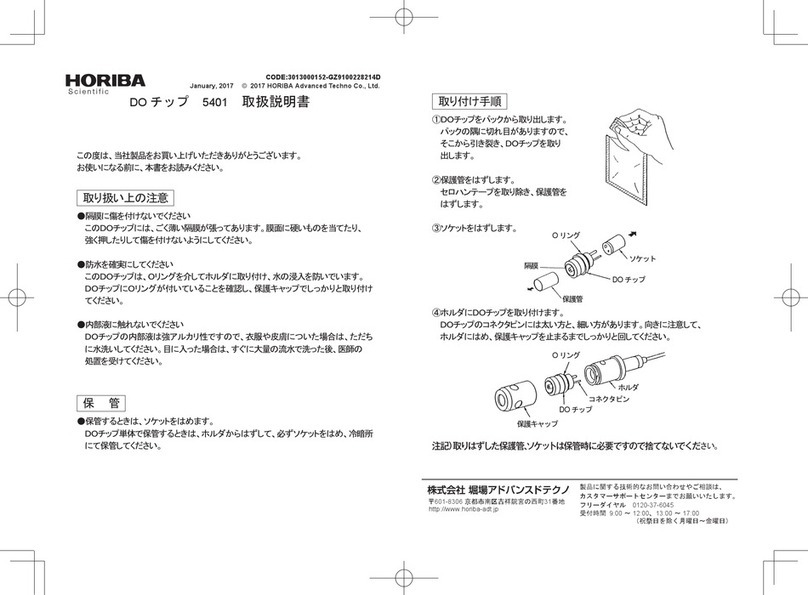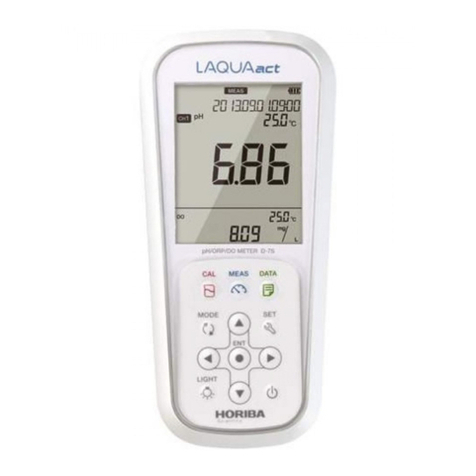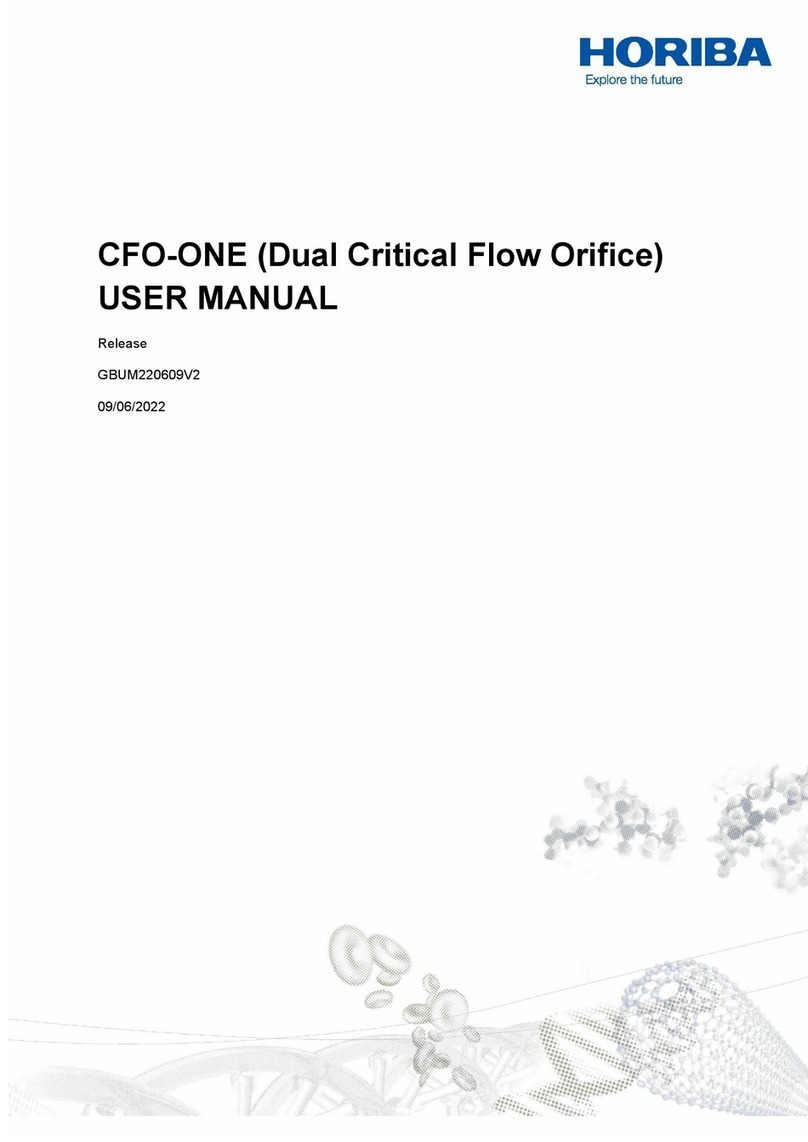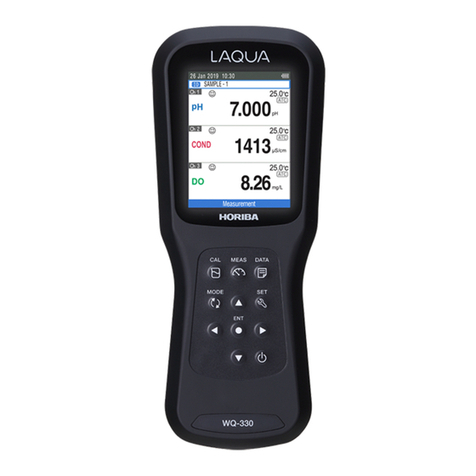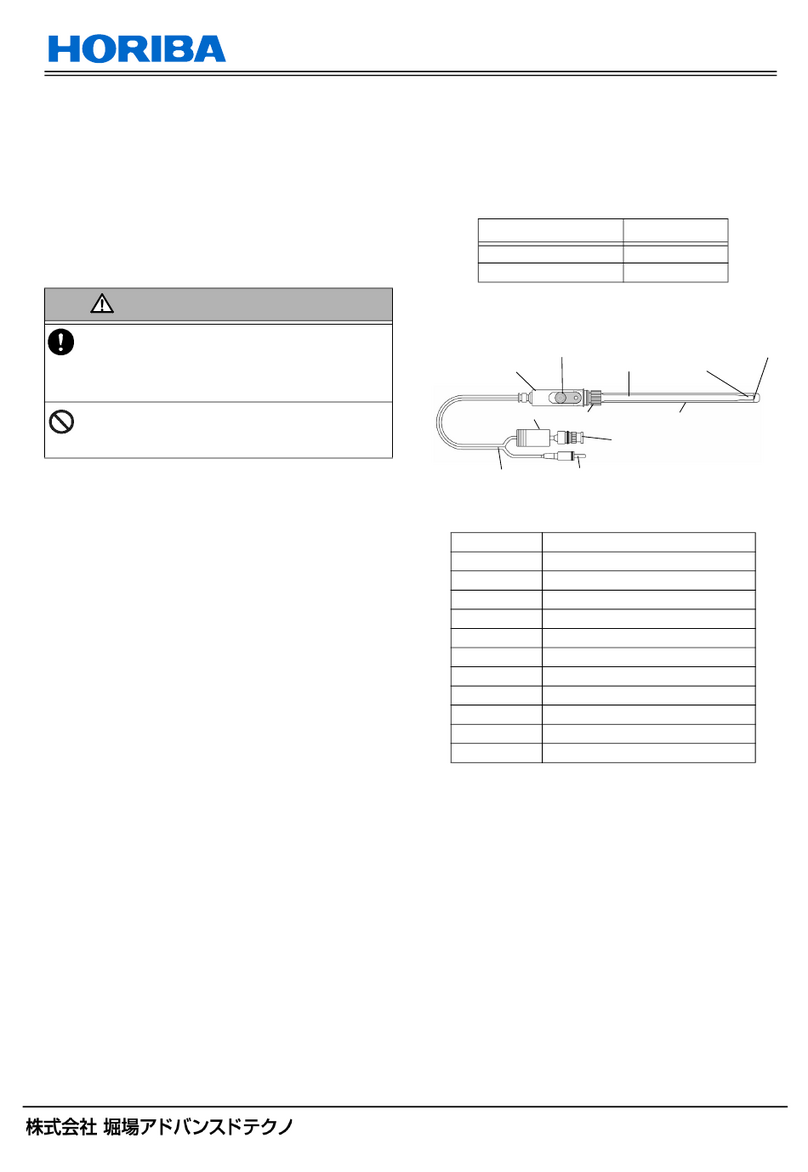
For any questions regarding this product, please contact your local
agency, or inquire from the HORIBA website.
(http://global.horiba.com/contact_e/index.htm)
http://www.horiba.com
2 Miyanohigashi, Kisshoin Minami-ku, Kyoto 601-8510 Japan
CODE:GZ0000243342
April, 2011 © 2011 HORIBA, Ltd.
pH Electrode
9681-10D Instruction Manual
Thank you for purchasing a HORIBA pH electrode.
Read this manual carefully, before using the electrode.
JCaution on Use
Safety Precautions
Points of concern
zDo not shock the electrode.
zDo not measure chapped or cracked electrode. Replace
such electrode with a new one.
zDo not allow the connector to come in contact with water
or unclean hands. If not, accurate measurement cannot
be performed.
zAlways use the 3.33 mol/L-KCl solution (model 300)
internal solution for reference electrode.
zIf the responsive glass membrane or liquid junction is
very dirty and cannot be washed clean using pure water,
cleanse it depending on dirt condition.
(Refer to “ Maintenance ” (page 3).)
zAvoid continuous use of this electrode at acidic or
alkaline concentrations above 0.1 mol/L. Using the
electrode under these conditions may harm
performance and shorten the life of the electrode.
zDo not measure the solutions which contain fluoride ion,
which may corrode the glass electrode.
zDo not suddenly immerse the electrode in samples
where the temperature variation is 50°C or more.
zSilver chloride can be detected inside the responsive
glass membrane. However, it will not cause any
performance problem.
zDo not use the electrode in any place where usable
temperature is out of the specified range.
zWhite crystal can adhere to the internal solution filler
port or protective cap after storage of the electrode.
However, it will not cause any performance problem.
zIf the sleeve of the liquid junction is stuck with
crystallized internal solution, immerse the sleeve in hot
water at 30°C to 40°C to dissolve the crystal, and then
move the sleeve carefully to check the internal solution
discharges. (Use of the ultrasonic cleaner is effective.)
zPush down the sleeve lightly. If it is pushed down
strongly, potential difference between liquid may be
greater and may cause error of measurement.
JPackaged Contents
CAUTION
Chemical solution
The internal solution in the electrode uses potassium chloride
(3.33 mol/L-KCI). If the internal material comes in contact with the
hands or skin, wash immediately with water. If the internal solution
comes in contact with the eyes, flush with a large amount of
running water, then seek medical advice.
Glass fragments
Glass fragments can cause injury.
The outer tube and tip of the electrode are made from glass.
Be careful not to break them.
Name Q’ty
Electrode 9681-10D 1 pc
Attachment holder 1 pc
Instruction manual (this book) 1 booklet
JSpecifications and Parts Description
Part name
Specifications
JConnecting to pH meter
1. Insert the electrode connector into the connector port
sleeve on the meter, after aligning with the pin. Do not
insert the connector unless it is aligned properly with the
connector port.
2. Press the electrode connector into the connector port on
the meter, while turning the connector to the right.
3. Slide the connector cover over the connector. Then,
push the cover in straight until it comes in light contact
with the meter case. Do not turn the cover.
4. Insert the temperature connector into the jack on the
meter. Insert the connector firmly, until the O-ring on the
connector can no longer be seen.
Note
Be sure to install the temperature connector. If not, accurate
measurement cannot be performed.
Electrode model 9681-10D
Measurement range pH 0 to 14
Usable temperature range 0°C to 60°C
Storage temperature range 0°C to 50°C
Internal electrode Silver/silver chloride
Reference electrode internal
solution 3.33 mol/L-KCl solution (model 300)
Liquid junction Sleeve
Liquid junction material Glass
Wetted material Glass
Electrode length 203 mm
Ext. diam. of wetted part 12 mm
Liquid junction height Approximately 26 mm (from the tip of
electrode)
Lead length 1 m
Liquid junction
Protective cap
Stem
Cap
Temp. connector
Electrode connector
Connector cover
Lead
Responsive glass membrane
Internal solution filler port
Knurled nut
①②
③
④
